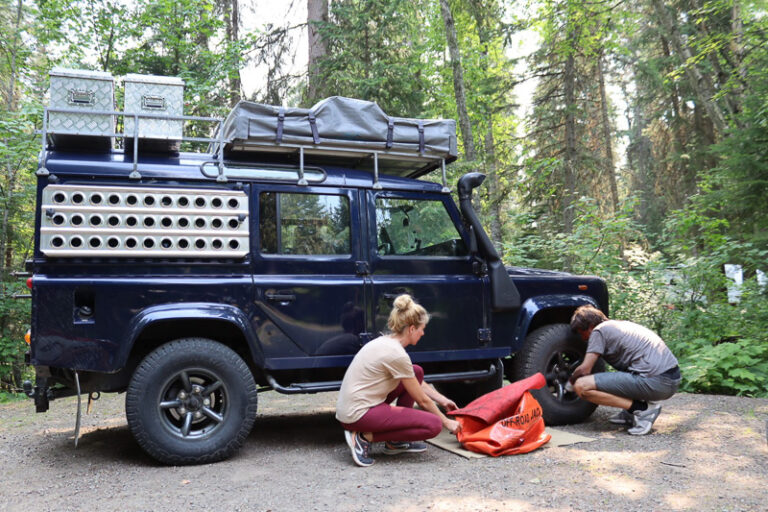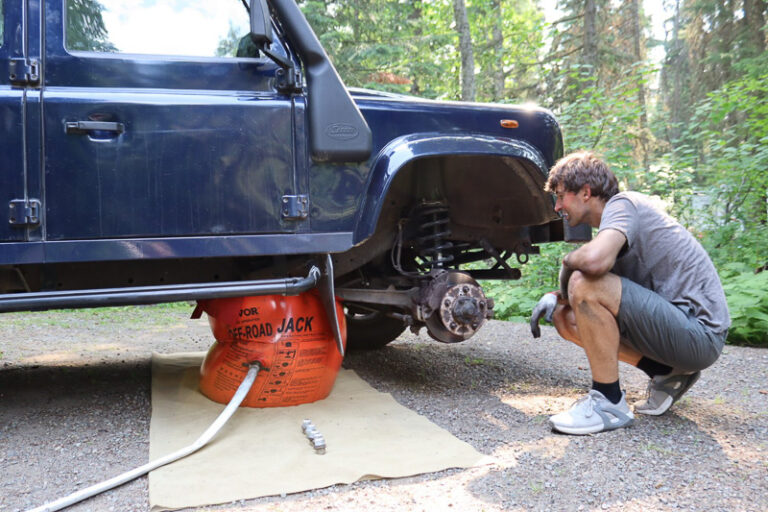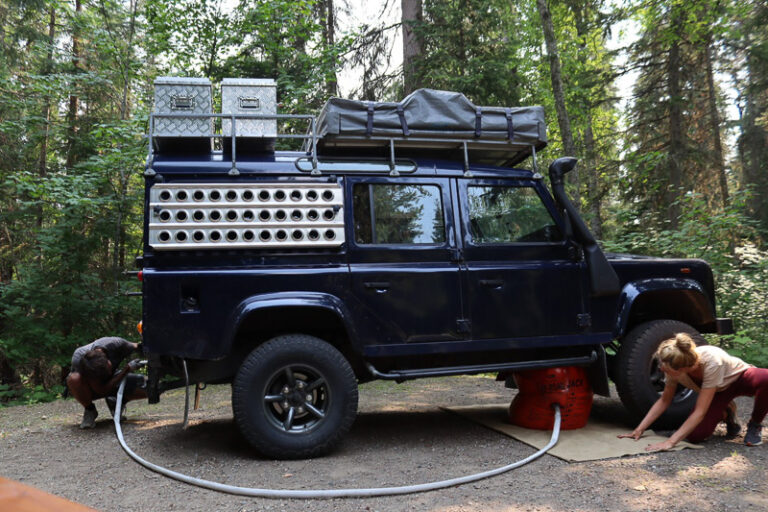Air Jack
Lifting the car during overlanding is essential for recovery or maintenance purposes, and a reliable jack is a must-have tool. Overlanders typically consider two options: a high-lift jack or an exhaust air jack.
While a high-lift jack can get the job done, its use poses inherent dangers, especially for inexperienced individuals. The handle can move back forcefully and sometimes uncontrollably, leading to potential injuries. Most accidents occur when the handle flips back, trapping a body part between the handle and the jack.
Due to these safety concerns, we chose to go with an air jack, as it performs the same function but in a much safer manner. The air jack operates by connecting a hose to a robust bag, which is then attached to the car’s exhaust. The deflated bag is to be placed underneath the car in a safe and stable location. Then starting the engine allows air to flow through the hose, inflating the bag and gradually lifting the car.



Though we have used the air jack twice during tire rotations, the experience was somewhat cumbersome. While the concept is theoretically perfect, safe, and user-friendly, achieving the right amount of air and pressure from the car’s exhaust can be a challenge. Practice will likely improve our efficiency.
To complement the air jack, we also acquired a hydraulic bottle jack for planned maintenance. This smaller jack is significantly easier to use on flat and solid ground, providing a safe and convenient option. While it may not lift the car as high as an air jack or high-lift jack, its practicality on stable terrain makes it a valuable addition to our toolkit. Depending on the situation, we now have the flexibility to choose the most appropriate type of jack for the task at hand.
